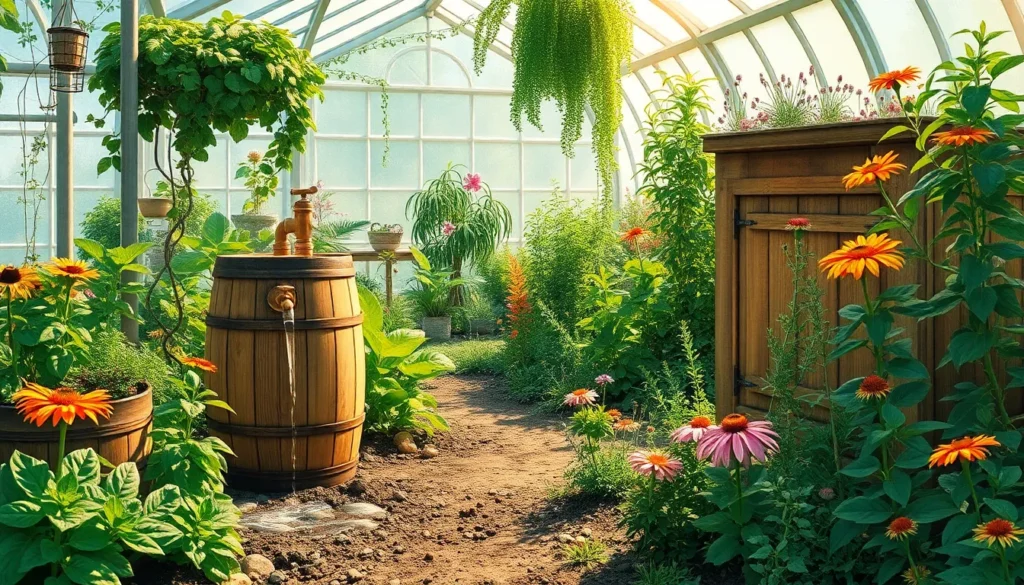Imagine harnessing the power of nature to nurture your garden, a practice as old as time but more relevant than ever. Rainwater harvesting isn’t just a sustainable choice; it’s a garden game-changer that both novice and seasoned gardeners can embrace with enthusiasm. With climate patterns becoming increasingly unpredictable, capturing and utilizing rainwater can be a rewarding solution that offers both environmental and personal benefits. This harmonious dance with nature not only conserves precious resources but also enhances the vitality of your plants, making your garden a thriving oasis.
In this article, we’ll explore six common methods of rainwater harvesting that are both effective and accessible for gardeners of all skill levels. Whether you’re just starting out or have been tending your garden for years, these strategies will provide you with practical ways to maximize the benefits of each precious drop. From simple barrel systems to more elaborate setups, each method has its unique advantages and can be tailored to fit your specific gardening needs. By the end of this guide, you’ll have the tools and confidence to implement rainwater harvesting techniques that will make your garden more resilient and bountiful.
Understanding Rainwater Harvesting Basics
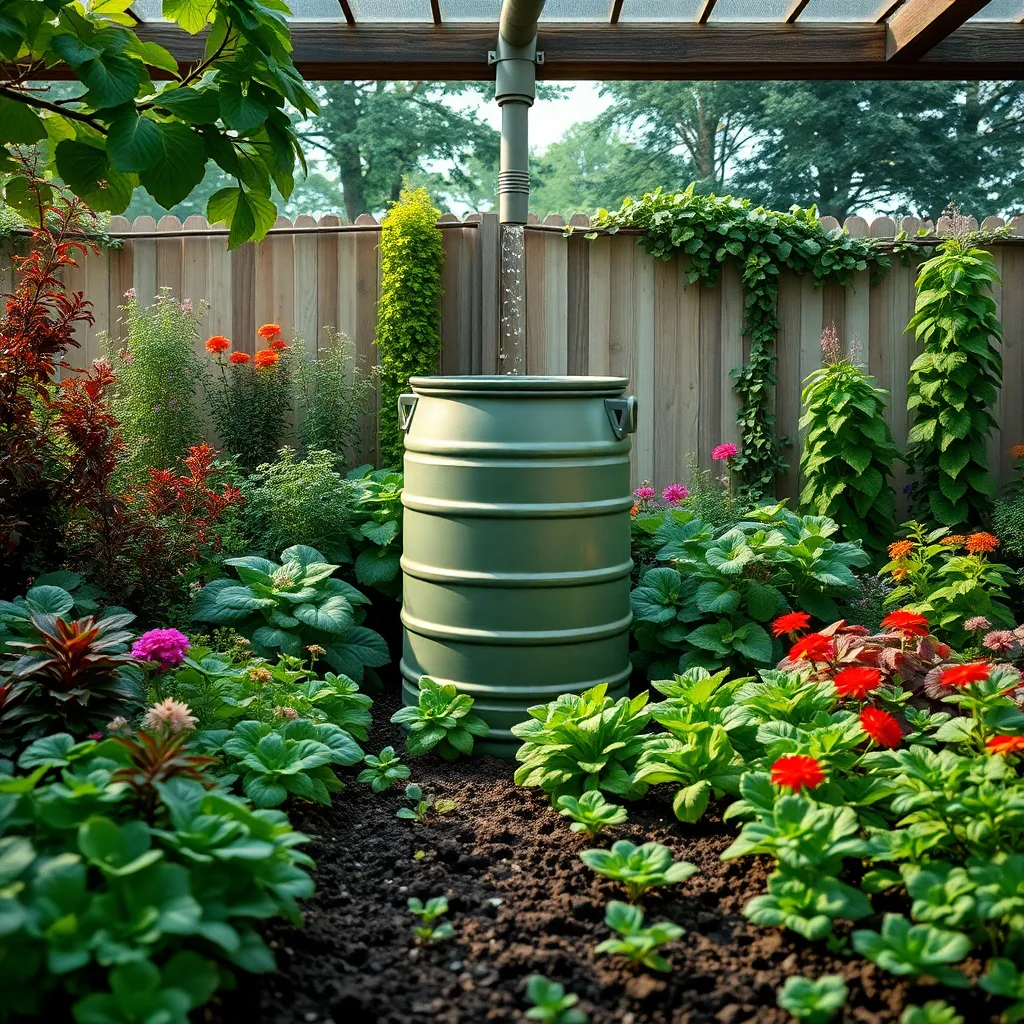
Rainwater harvesting is an excellent way to make your garden more sustainable while also reducing your water bill. By collecting rainwater, you can ensure your plants have a supply of chemical-free water, which can improve their health and growth.
To start harvesting rainwater, set up a simple system using a rain barrel connected to your downspout. Ensure that the barrel has a fine mesh screen to keep out debris and insects, and position it on a stable, elevated surface to make accessing the water easier.
When using harvested rainwater, it’s essential to monitor your soil moisture levels to avoid overwatering. For most gardens, watering deeply but infrequently encourages deeper root growth, which is beneficial for plant health.
Advanced gardeners may consider installing a larger rainwater catchment system to support a bigger garden space or multiple garden areas. Integrating a drip irrigation system with your rainwater setup can provide efficient, targeted watering, which conserves water and benefits plant growth.
Choosing the Best Collection System
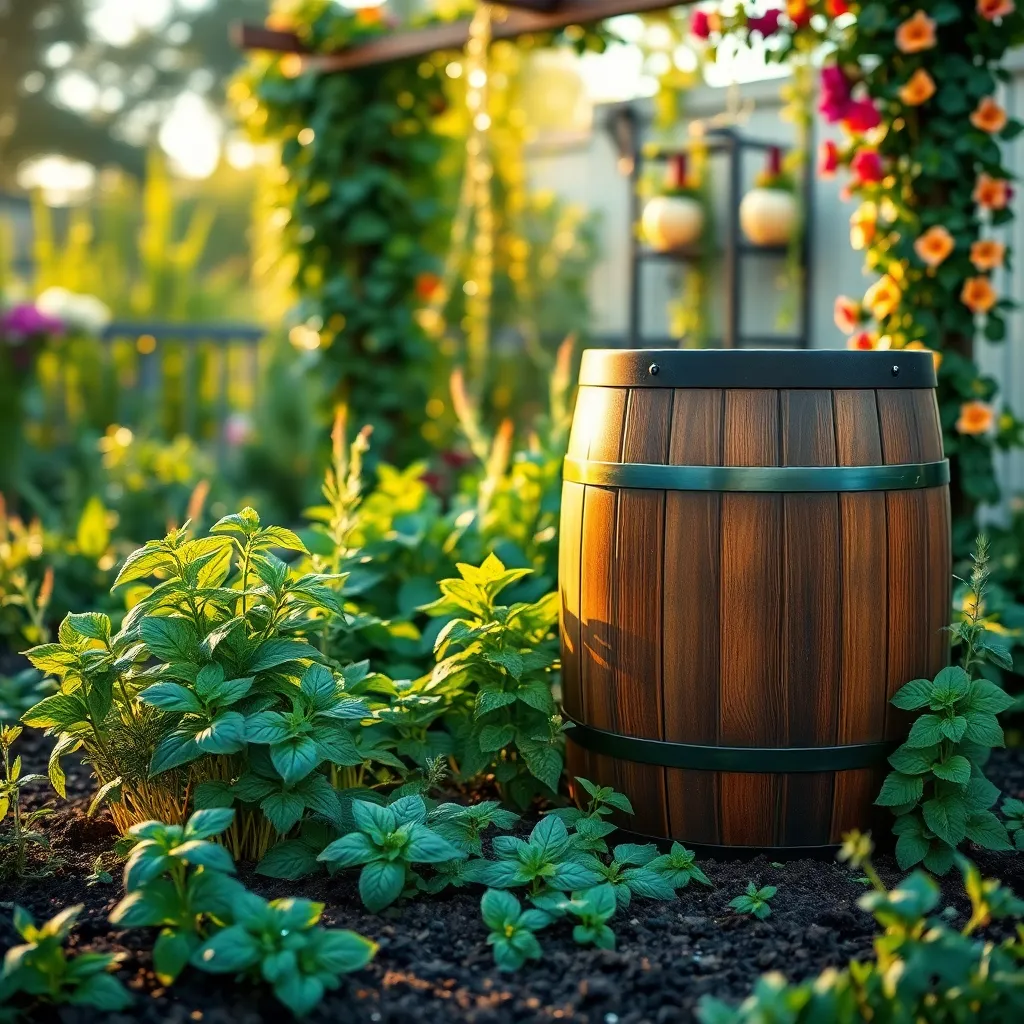
When deciding on a rainwater collection system, it’s important to consider your garden’s specific needs and layout. A simple system like a rain barrel can be ideal for those with smaller gardens or limited space, providing a straightforward way to collect and store rainwater.
For larger gardens, a more expansive system might be necessary to meet higher water demands. Consider installing a series of interconnected barrels or a larger cistern, which can be placed strategically to maximize collection efficiency from multiple roof areas.
Evaluate the capacity of your chosen system based on average rainfall in your area and the water requirements of your garden. Most plants thrive with about an inch of water per week, so estimating the total water needs will help you choose the right system size.
Another crucial aspect is the material of your collection system, as this affects both durability and water quality. Opt for food-grade materials like polyethylene or stainless steel, which are both durable and safe for storing water intended for garden use.
Additionally, ensure your system includes filters and screens to prevent debris from contaminating the water supply. Regular maintenance, such as cleaning gutters and checking for leaks, will enhance the longevity and efficiency of your collection system, allowing you to maximize its benefits throughout the growing season.
Installing Efficient Rain Barrels

Rain barrels are a fantastic way to collect and utilize rainwater efficiently for your garden. They not only help conserve water but also reduce your water bill, making them an economically wise investment.
To install a rain barrel, first identify a suitable location, ideally under a downspout where water naturally flows off your roof. Ensure the barrel is placed on a sturdy, level surface to prevent tipping and optimize water collection.
Begin by cutting the downspout to direct water into the top of the barrel, using a diverter to manage overflow during heavy rains. This setup not only keeps the area tidy but also prevents erosion around your home’s foundation.
Make sure the rain barrel has a secure lid to prevent debris and mosquitoes from entering. A fine mesh screen can serve this purpose effectively while still allowing water to flow freely into the barrel.
Once your rain barrel is set up, consider connecting multiple barrels for increased capacity if your area experiences frequent heavy rainfall. This can be done using a linking kit, which allows barrels to fill sequentially.
For advanced users, incorporating a drip irrigation system directly from your rain barrel can automate watering. This system ensures that your plants receive consistent moisture, and since rainwater is naturally soft, it’s ideal for most plants.
Maximizing Storage with Cisterns
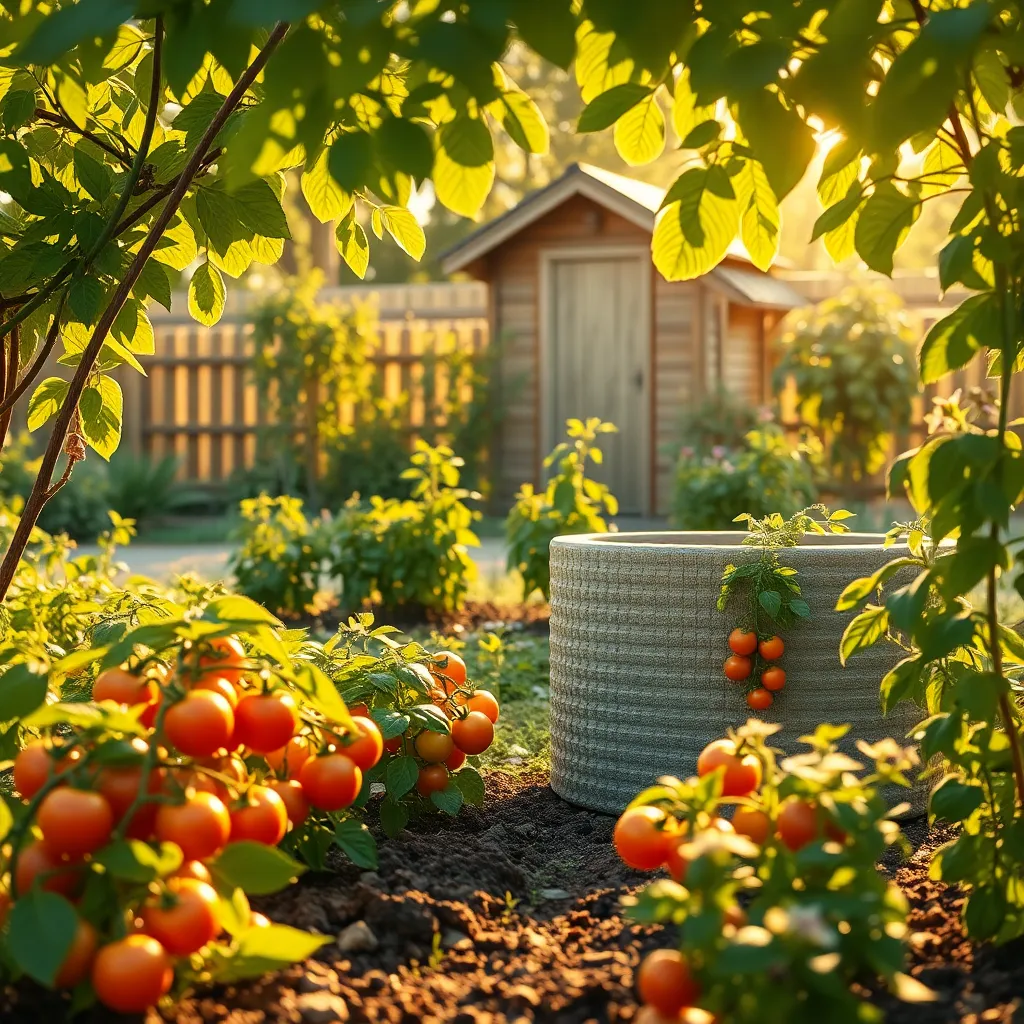
To maximize your rainwater storage, consider investing in a cistern, which can hold a significantly larger amount of water compared to rain barrels. Cisterns are ideal for gardeners who want to support extensive irrigation systems or have large gardens that require consistent watering.
Begin by selecting a location for your cistern that is both accessible and close to your garden. Ensure the area is level and stable to support the weight of a fully filled cistern, which can be substantial.
When installing a cistern, connect your roof’s downspout to the cistern intake to capture the maximum amount of rainwater. Use a filtration system to remove debris before the water enters the cistern to keep the collected water clean and suitable for plants.
For gardeners looking to enhance efficiency, consider using a pump to distribute the water from the cistern to your garden. This setup allows you to water plants at a consistent rate, ensuring they receive the moisture they need without overwatering.
Integrating Drip Irrigation Systems
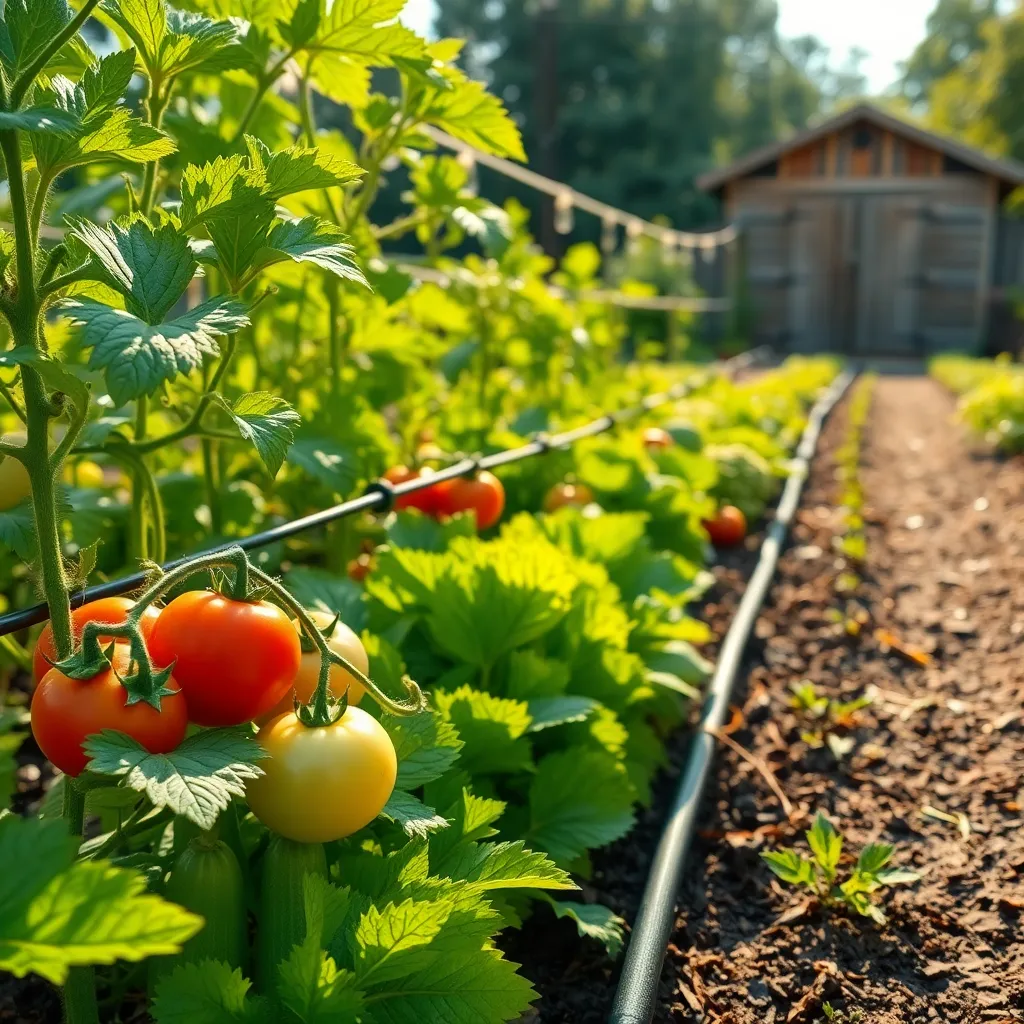
Integrating drip irrigation systems into your rainwater harvesting setup can significantly enhance water efficiency in your garden. This method targets the root zone directly, reducing water waste and promoting healthier plant growth.
Start by assessing your garden’s layout to determine the best placement for drip lines. It’s crucial to tailor the system to your garden’s specific needs, ensuring that each plant receives the right amount of water.
For beginners, a basic system with adjustable emitters can accommodate various plant types. More experienced gardeners might opt for advanced features like automatic timers, which can further optimize watering schedules.
To install a drip system, connect the main line to your rainwater storage tank and run smaller lines to individual plants. Use a filter to prevent debris from clogging the emitters, ensuring consistent water flow.
Regular maintenance is key to a successful drip irrigation system. Check emitters regularly for clogs and adjust them as plants grow or seasons change to maintain optimal watering.
Maintaining Your Harvesting Setup
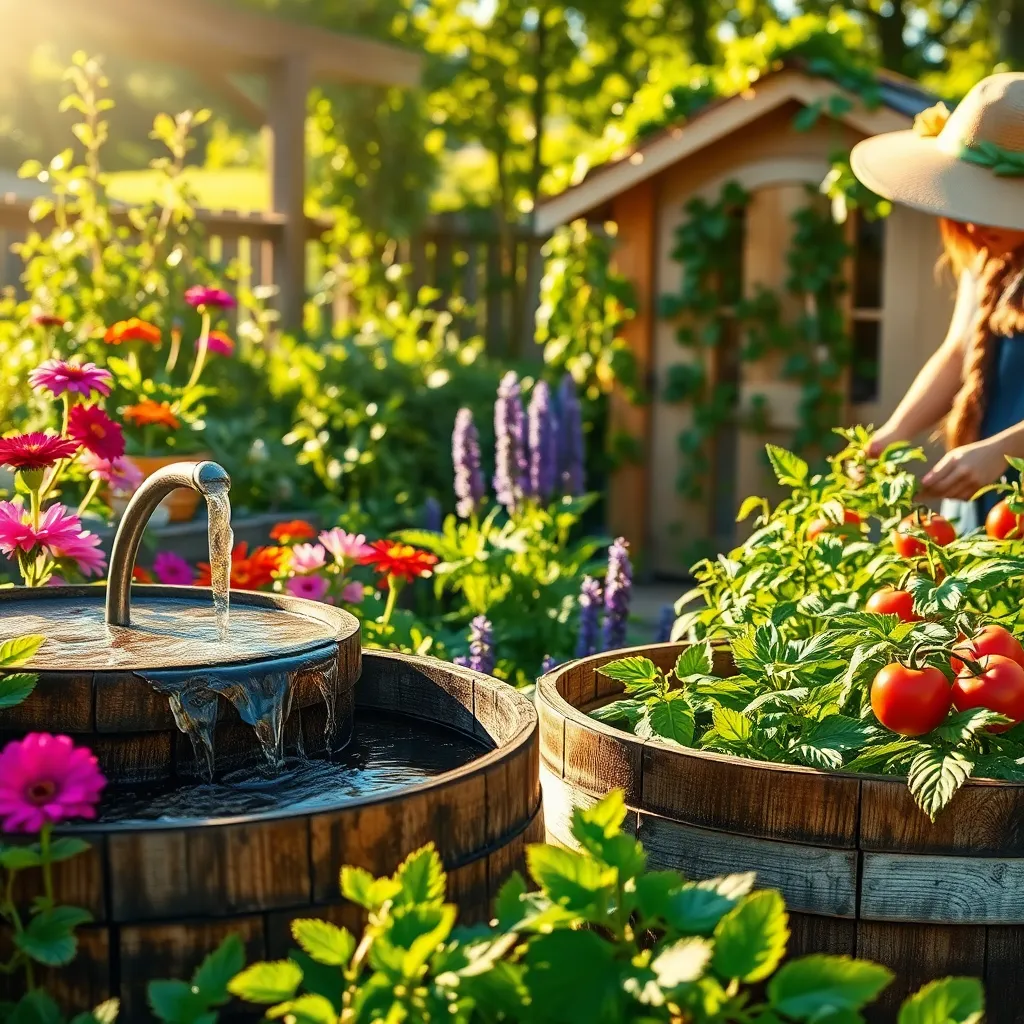
To ensure your rainwater harvesting system operates efficiently, regular maintenance is crucial. Begin by routinely inspecting your system for any leaks or blockages, which can impede water flow.
Cleaning the gutters and filters can prevent debris from contaminating your water supply. It’s also helpful to periodically flush your system to remove sediment buildup, ensuring clean water for your plants.
For those using barrels or tanks, ensure they are securely covered to minimize evaporation and prevent mosquito breeding. Regularly check for cracks or damage to avoid water loss and ensure the system’s longevity.
Advanced gardeners might consider installing a first flush diverter to improve water quality by discarding the initial rainwater, which often contains contaminants. Additionally, maintaining an appropriate slope in your gutter system can enhance water collection efficiency.
Conclusion: Growing Success with These Plants
As we’ve journeyed through the ‘6 Common Rainwater Harvesting For Gardens,’ we’ve unearthed vital relationship concepts that extend beyond the garden and into the heart of human connection. First, we’ve learned about the importance of nurturing our bonds with attention and care, just as rain nourishes the soil. Next, we explored the art of patience, understanding that growth takes time. Third, adaptability is key, allowing us to adjust to life’s unexpected weather. Fourth, we’ve seen how balance, like water distribution, is crucial for harmony. The fifth concept highlighted the value of consistency in sustaining healthy relationships, while the sixth emphasized the need for a sustainable approach to love and care.
Now, take the first step: Reflect on one relationship in your life that needs your attention today. Consider how you can apply these principles to cultivate deeper, more meaningful connections.
Don’t forget to bookmark this article for future reference; it’s a valuable resource to revisit whenever you need guidance. Remember, successful relationships are not built overnight—they require ongoing effort and dedication. Embrace this journey with optimism, knowing that every drop of effort contributes to a flourishing, lasting connection.

